A BETTER BERRY?
Out With The Old, In With The New
“Doubtless God could have made a better berry, but doubtless God never did,” wrote a Dr. Boteler about the strawberry (as quoted in Izaak Walton’s 17th century classic The Compleat Angler). I disagree. I also don’t like to crawl for my fruit. With that said, I’ll agree that strawberries do taste very good, more so for being, usually, the first fruits of the season.
I just took a look at my strawberry bed; weeds are making inroads and the plants look pretty puny. Dispatching the weeds is no problem. As far as the puny plants, it was to be expected. Although strawberries are perennial plants, over time they pick up diseases, including some virus diseases lacking dramatic symptoms except that they reduce productivity. So a strawberry bed should be replanted — at a new location — every 5 years. My garden notes tell me my strawberry bed is 8 years old.

My strawberry bed in its prime
Strawberries send out shoots, called runners, at the ends of which develop new plants which, in turn, send out runners that also develop new plants, ad infinitum. So an untended bed can become very weedy, with strawberries. Even a well-tended bed sneaks in a few extra plants here and there. None of these plants should be used to start a new strawberry bed! Viruses are systemic, so all these new plants will also carry any virus infection.
I’ll be ordering my new strawberry plants from a nursery that sells certified disease and virus free strawberry plants. Then, at least, the plants start off “clean.”
The Best Berry Of All
If I had authored that quote by Dr. Boteler, I would have applied it to highbush blueberries. Not only are they, in my opinion, the best tasting berry, but the plants are truly perennial, remaining productive for 50 years or more. And I can harvest them standing up.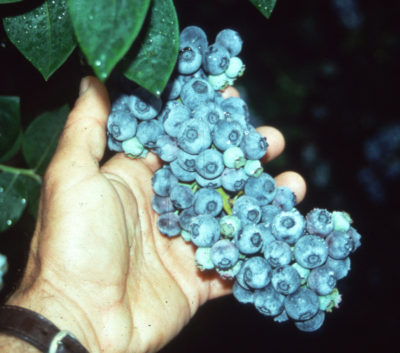
No one is sure just how long a blueberry bush will thrive because they haven’t been cultivated for very long. It was only about a hundred years ago that Dr. Frank Coville of the USDA started studying blueberries in an effort to learn how to grow them. Previous to that, harvests were from wild plants. Even 50 years ago, fresh blueberries rarely appeared on grocer’s shelves.
Of Strawberries And Intrigue
Strawberries, also, have come into cultivation relatively recently, in this case over the past 200 years. Garden strawberries, that is, which owe their origin to a chance mating of two American species of strawberry in a garden in France.
One parent of the modern garden strawberry is the Virginia strawberry of eastern North America. Plants of this tasty, small-fruited species were brought over to Europe and planted in gardens there as early as the 17th century.
Intrigue enters the story in the arrival of the other parent of the modern, garden strawberry, the Chilean strawberry, to Europe. Moving the clock forward to the beginning of the 18th century, we find the French King Louis XIV needing a spy to observe Spanish fortifications in Concepcion, Chile. For this task, he chooses Amédée Francois Frezier, a young lieutenant colonel who had already distinguished himself with an aptitude for foreign languages and science. Amédée set sail on an armed merchant marine ship in 1712.
Upon his arrival in Concepcion, Chile, Amédée posed as a merchant marine captain, which enabled him to visit Spanish fortifications as a tourist. Secretly, he kept notes and made sketches of ammunition stores and escape routes. Besides military reports, Amédée also wrote about the indigenous peoples, the physical geography, and agriculture of the region. One of the plants that caught the lieutenant colonel’s fancy was the Chilean strawberry, which bore fruits larger than those that were known in Europe. Amédée included descriptions and sketches of the Chilean strawberry in his notes, and when it finally came time to leave Chile in 1714, he packed up five plants to smuggle back for his return voyage.
The marriage of the two species finally took place in a strawberry field near Brest, France as a bee carried pollen from the flower of a Virginia strawberry to the female flower of a Chilean strawberry. A seed from the fruit that developed germinated and grew into a plant that was the first modern, hybrid strawberry, combining the large size of one with the high flavor and intense red color of the other.
Better Strawberries
Since Dr. Boteler and Izaak Walton were writing in the 17th century, that “better berry” to which they referred could not have been the modern, garden strawberry. But other species were enjoyed before the modern species came into being: the alpine strawberry (Fragaria vesca), and the musk strawberry (Fragaria moschata). Both species yield delectable, though small, fruits, and are still available today. I’ve grown both.
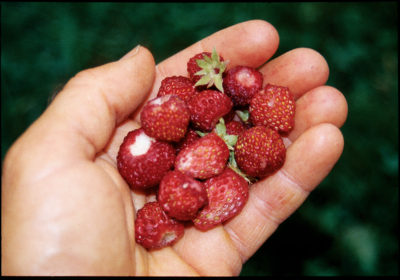
Musk strawberry
Musk strawberry might be the best tasting of all, but yielded very little for me.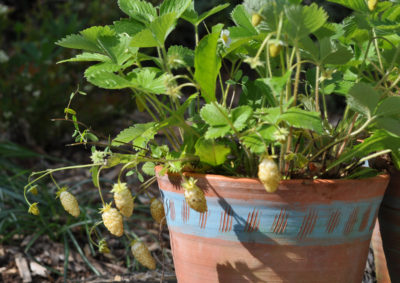
I’ve grown, and still grow, alpine strawberries, white ones that have a pineapple-y flavor and are ignored, because of their lack of color, by birds. The plants are cold-hardy, don’t make runners, and bear all season long. The fruits are a nice, little treat, but not ones with which you’d fill your freezer. For that, the one to plant is some variety of the modern, garden strawberry. I’ll be ordering plants of Earliglow.

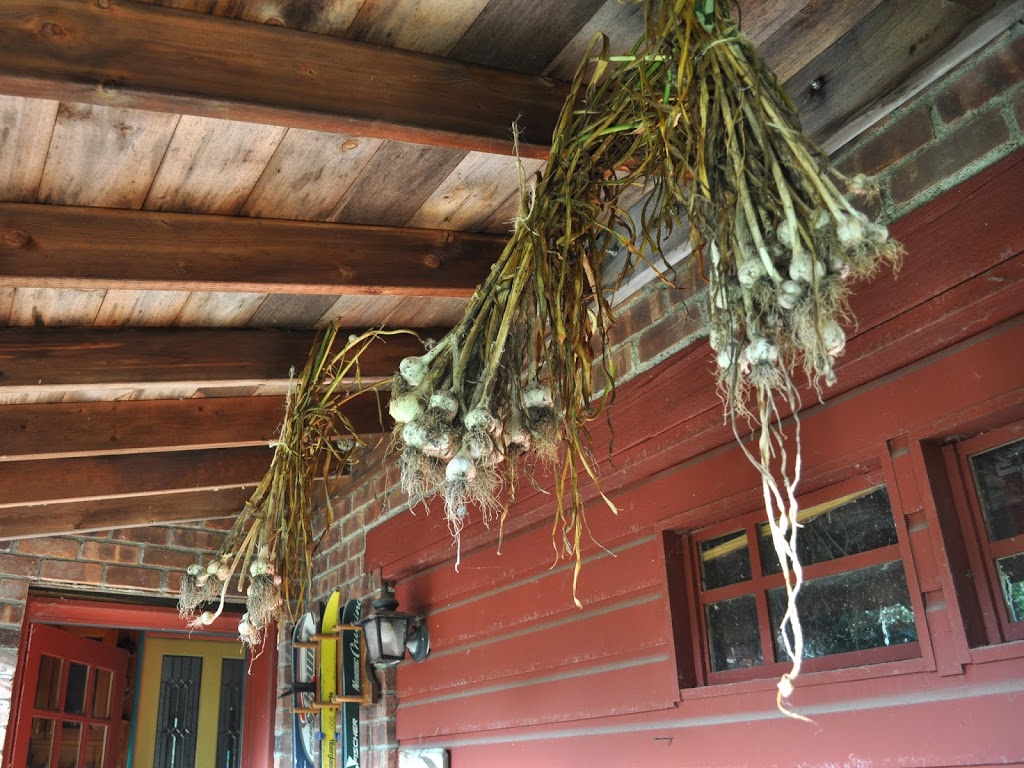
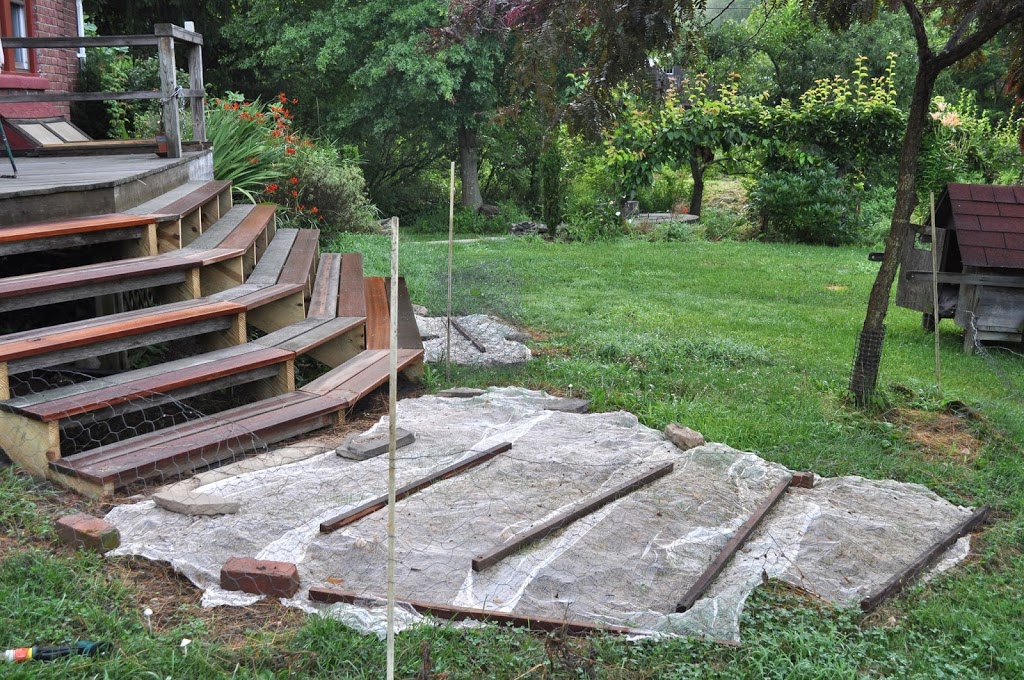
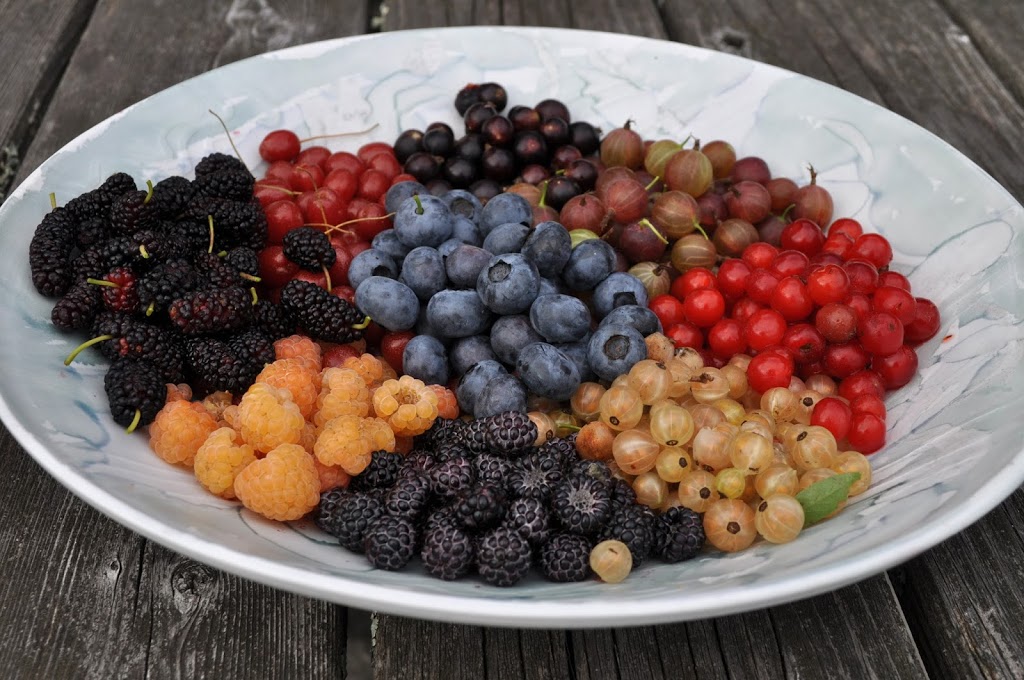
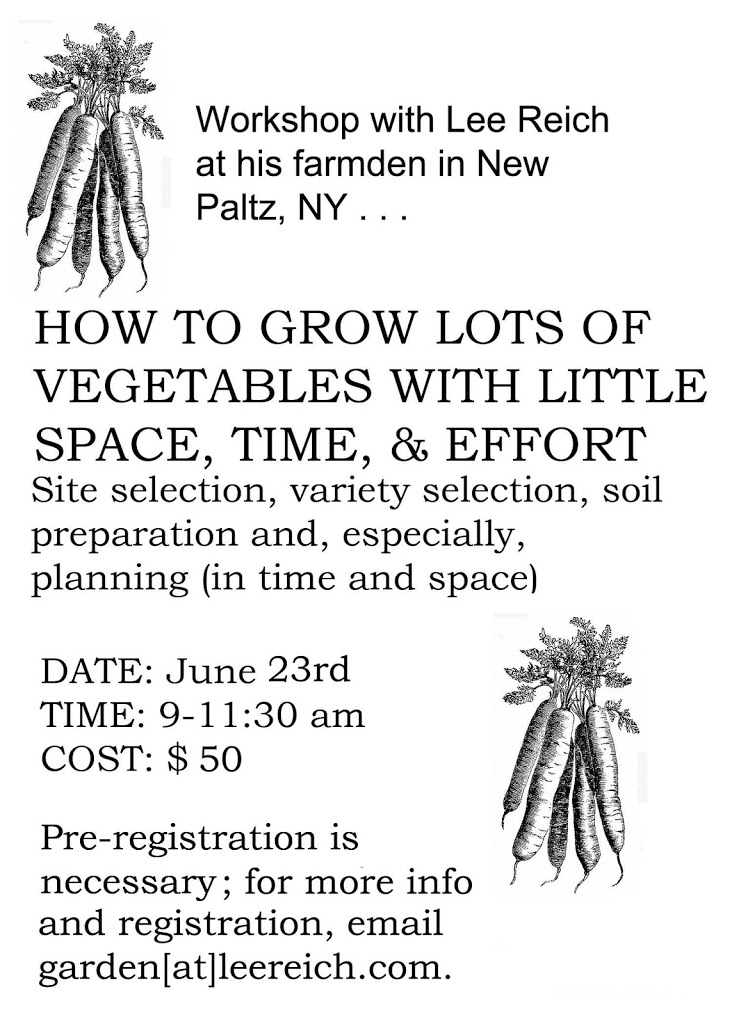

Lee what is the netting you have on the strawberries and where can I purchase? Thanks.
http://www.raintreenursery.com is where I now get my bird netting. You can order whatever size you want.
Have you thought about growing strawberries in those vertical garden towers? Then you might be able to grow year around with a day neutral variety, in your greenhouse. I bury my hanging basket strawberries in raised beds in winter then bring into greenhouse in Feb or March. That way you get a much earlier harvest.
I’m not willing to put that much effort into strawberries. I like them in season, and that’s about it.
If you ever see someone sell a bio-degradable row cover or netting, let me know. I’m trying to not buy any synthetic fibers – very difficult when my other family members keep buying them (and asking for plastic straws at restaurants – drives me nuts!). Now, if only my previously favorite company Patagonia could sell natural fiber fleeces. (google scholar microfibers to see how these things are getting in our food supply and water)
The problem with biodegradable row cover is that it would have a very short life — it would biodegrade. I treat my row covers carefully and get many years of use out of them.
Tobacco netting is good, too, if you are in Western Mass, get it at Amherst Farmers Supply.
I love Earliglow. Borytritis nixed it in our garden. I think we don’t have the amount of sun and breezes you’d have in a bigger yard away from sugar maples. But we can pick strawberries elsewhere and make maple syrup at home.
You’re right: Sun and good air circulation limits botrytis. Also pick infected berried and dispose of them in your compost pile.